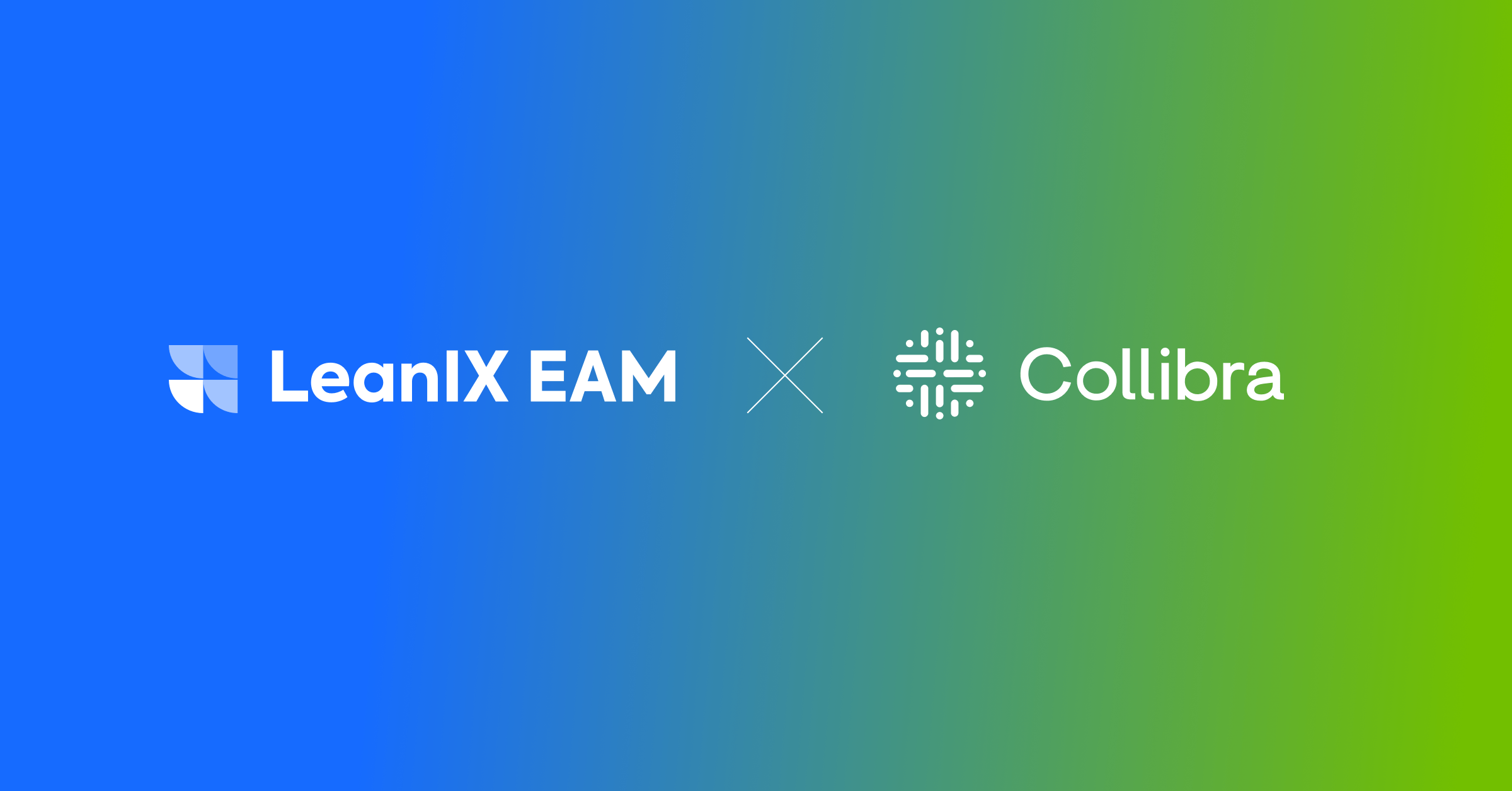
Enterprise architecture management is far more than just an ivory tower exercise. Learn to empower your EA function with democratized data.
Enterprise architecture is about aligning your IT landscape with your business strategy. Yet, alignment is impossible unless the various teams within your organization are working together.
True collaboration can only be achieved by empowering all teams equally and uniting them in the pursuit of a common vision. That requires a shared view of both your current state and reasons for change.
You need the right tool to gather accurate, live data from across your IT estate and visualize it for your different stakeholders. That tool is LeanIX EAM.
Let's explore the reasons why data democratization is key for enterprise architecture management, and why that's so important for achieving your strategic goals.
The Value Of Enterprise Architecture
The responsibility of an enterprise architect is to align your organization's IT landscape and processes with its strategic goals. They act as a bridge between senior leadership and IT, driving business-led IT and business transformation.
Yet, enterprise architecture is often criticized for being an 'ivory tower' exercise. When enterprise architecture is focused on strategic discussions with leadership without being in touch with day-to-day operations on the ground, it becomes a theoretical exercise that rarely achieves results.
An enterprise architect could, for example, communicate to your IT team that leadership plans to expand into a new region. However, to be effective, they must also pass back to leadership that the expansion would require an investment in local server capacity.
This is why your enterprise architecture team cannot operate in isolation. The value of an enterprise architect is in their ability to align stakeholders in IT and leadership, acquiring information on both, and ensuring collaboration and synergy throughout your organization.
Democratization Is Key To Enterprise Architecture
Enterprise architecture is, therefore, reliant on the ability to foster collaboration among stakeholders. The best way to do that is to empower them.
Dictating a course of action and a methodology to a stakeholder is never going to win their enthusiastic collaboration. To truly achieve alignment, you must offer a goal, a vision, and a strategy that everyone has a stake in, then work with them to devise a roadmap and action plan to achieve that common goal.
Returning to our above example, it's not particularly effective to tell an IT team that your organization is moving to another region. A more constructive method would be to meet with the team to explain the business value of moving into that territory and ask them to work with you to assess the opportunity and devise the best strategy for leveraging it.
Achieving this, however, requires two things:
- Proving the business value of your initiative
- Visualizing your roadmap and progress for your stakeholders
Both of these require accurate, real-time data.
Data Is The Key To Democratization
Enterprise architects need key data to win investment from stakeholders in business transformation initiatives. This is true both at the start of the project and at every stage as it progresses.
Visualizing this data for your stakeholders is the only way to sell them on the benefits of the transformation, and keep them involved and active throughout the entire process. Making it immediately obvious what needs to be done and why is the best way to align your organization to a common cause.
Yet, this isn't about persuasion, but empowerment. By aligning stakeholders, you gain their active support, which expands your resources and reduces friction, accelerating and easing your business transformation.
Not only will your project team expand with support, but contact with different stakeholders will give you a better understanding of their processes and workflows, developing your transformation intelligence. When growing into a new region, for example, local knowledge and technical expertise in server implementation will be vital.
Yet, even data is at risk of becoming siloed and divergent unless it's preserved in a central location to ensure standardization. This is why a single source of information is so important.
A Single Source Of Truth
Enterprise architecture data and project planning information should be shared across your organization. This means that evidence of the value of your work and your progress is viewed with a common experience by every stakeholder, supporting alignment.
This vital context will support synergy between your different stakeholders, and also allow you to control the narrative of your project. This is important for avoiding misconception and maintaining alignment with your strategic goals.
With each of your stakeholders maintaining their own view of the data, you risk conflict and disparity, not to mention, this creates additional work. Maintaining a single database of enterprise architecture information is vital for enacting a business transformation.
This single source of enterprise architecture truth is even more useful when it's maintained within a tool specifically designed to enable business transformation with democratized enterprise architecture best practice. That's why you need LeanIX EAM.
LeanIX Enterprise Architecture Management

Enterprise architecture requires democratic collaboration among all stakeholders, which can only be supported by a single, shared source of data within the right enterprise architecture tool. That's why LeanIX partnered with Collibra, the data intelligence company, to create an integration between Collibra's platform and our EAM.
This integration allows LeanIX users to empower their enterprise architecture with reliable data sourced from Collibra. Collibra's data modernization resources can then be leveraged by LeanIX EAM and shared with all your stakeholders.
To find out more about the integration, book a demo:





